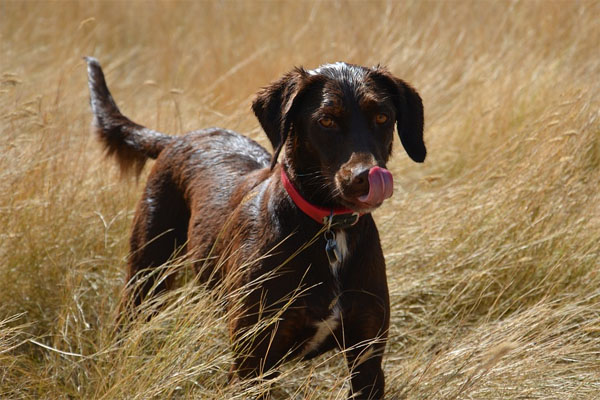Travel Pages
RomWell Travel Advisory
Hunting Dogs Puppy Selection - Part 2
By Mike Stewart - Wildrose Kennels - Home of Drake the DU Dog
Once the background work has been completed, breeds are chosen, as is the litter, then, realistically most of the decision-making process necessary in puppy selection is complete. One could just easily just de-select by color and sex and randomly pick from the remaining pups with reasonable assurance of success, but that would take the real fun out of it now would it not?
So, let's go pick that pup.
Upon arrival, first examine the bitch. Is she healthy, clean, and does she possess the confirmation and temperament you expected? How about the cleanliness of the facilities, the puppy pen/nest and the pups themselves? Inquire about the health and inoculation program for the pups. If all appears in order, proceed.
Take a look at the litter together on the ground, if possible. Do the pups appear active, alert, friendly, and inquisitive? Do they appear well socialized to people, activity, and noises? You should expect to see clear eyes, a bright expression, high active tails and a clean nose.
Now begin narrowing the selection. Pick up the undesirable pups by color and sex. This will leave the remaining choice for closer observation. As a matter of preference, I like to find a bolder pup which comes fearlessly but not the most aggressive nor the reluctant, lethargic wallflower that may shrink from activities.
Clap your hands. Does the pup respond with interest or retire in apprehension? As they scamper about, which is prone to pick up objects (leaves, sticks, etc.) and run about? Pups can't see well enough at 6 weeks to respond to thrown objects, but they may well pick up things, even wings, and carry them. As they do, call the pup, does it come with the object as if willing to share? This is a very good sign. In selecting older pups, this becomes a strong indication of tractability and natural delivery.
Which pups occasionally deviate from the group to explore something interesting on his own? You may have a real game finder here. Which pups are continuously using their nose to locate things of interest?
Which prefers the company of people to the company of their litter mates? Desirable traits include straight legs, solid chest with depth of rip (an indicator of sustainability and endurance due to maximum air intake), strong short backs, high tails, and the correct placement of teeth (bite). Do not forget, any defects, physical or mental, in the parents/grandparents are likely to be present in their progeny.
Breeders should not be about breeding out defects or having them suppressed through training. We should cull flaws out. Take a close look at those parents. Select the pup which will sit and look at you intelligently, not necessarily the dominate, hard-charging personality. Hard tail wagging is a good sign.
Usually 6 weeks is the age to pick up your pup but at that young age, selection is certainly more difficult. Pups change a great deal in personality between 5 and 10 weeks. Some of the greatest labs ever have been the ones left behind including King Buck, arguably the most famous of labs and Mike Lardy’s first national championship winner, Candlewoods Tanks a Lot. So much for “pick of the litter.”
Guide dog trainers for the blind have proven, though, that for optimum mental development, a pup needs to leave the nest at 6 weeks. Certainly, if at all possible, by 8 weeks. This also prevents the pack hierarchy from being too entrenched in the litter which may result in more pronounced dominant-submissive roles among the pups.
The breeder should provide you with health records, pedigree, registration certificates and instructions as to diet. Initially don't risk immediate changes in the pup's diet. If you desire using an alternative feed, slowly make the transition and be sure to keep inoculations on schedule.
Once selected, the fun really begins as you are on your way to building that perfect hunter retriever you have been dreaming about. Your new pup is the canvass on which to paint the portrait of this fine hunting companion. Now it is all up to you--the trainer.
"Buy a pup and your money will buy love unflinching." ~ Rudyard Kipling
Article Source: Ducks Unlimited Inc.
Ducks Unlimited conserves, restores and manages wetlands and associated habitats for North America's waterfowl. These habitats also benefit other wildlife and people. Visit their web site at www.ducks.org to learn more, support their mission or to find more info.
Related Links:
 Hunting Dogs - Puppy Selection Part 1
Hunting Dogs - Puppy Selection Part 1
 Retriever Puppy Training - What Not to Do
Retriever Puppy Training - What Not to Do
 10 Pitfalls in Retriever Training, Part 1
10 Pitfalls in Retriever Training, Part 1
 10 Pitfalls in Retriever Training, Part 2
10 Pitfalls in Retriever Training, Part 2



